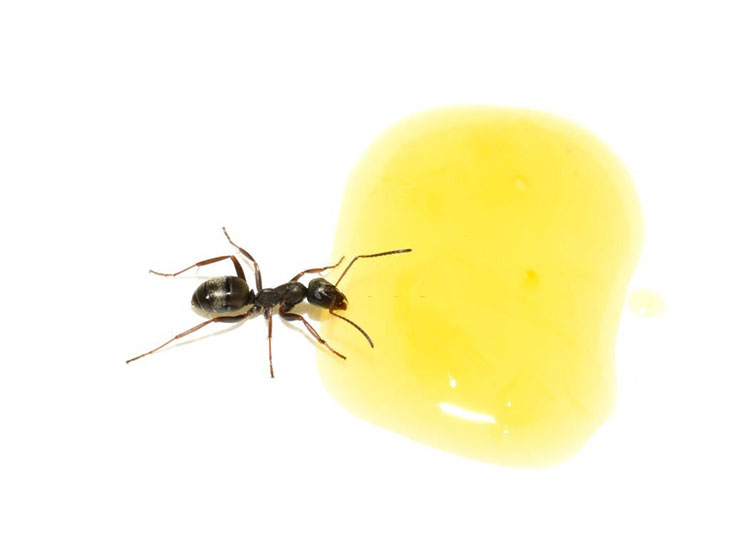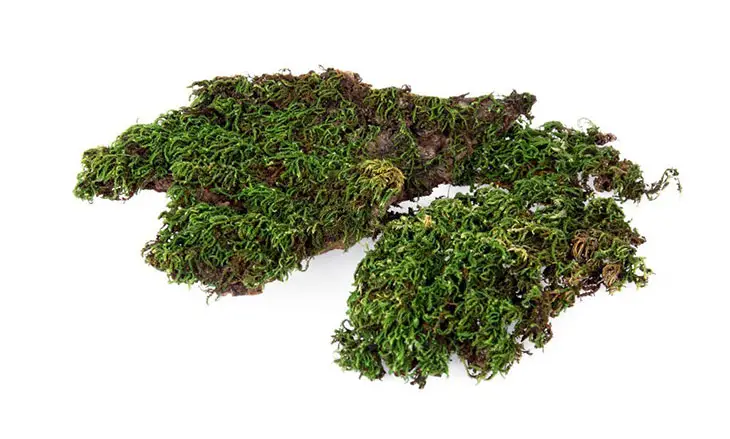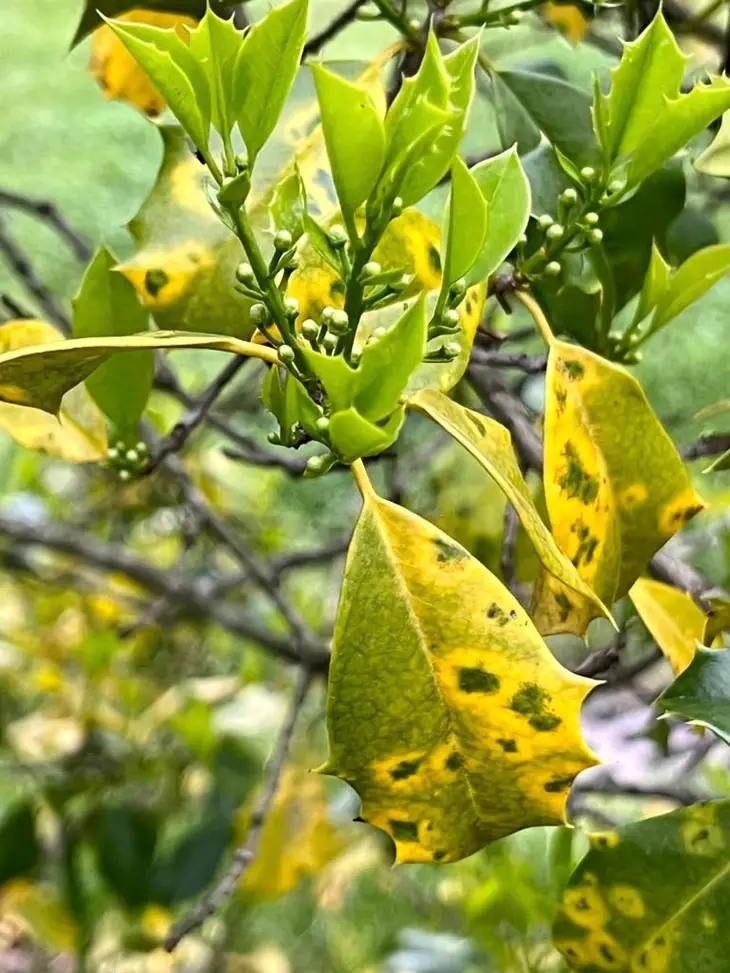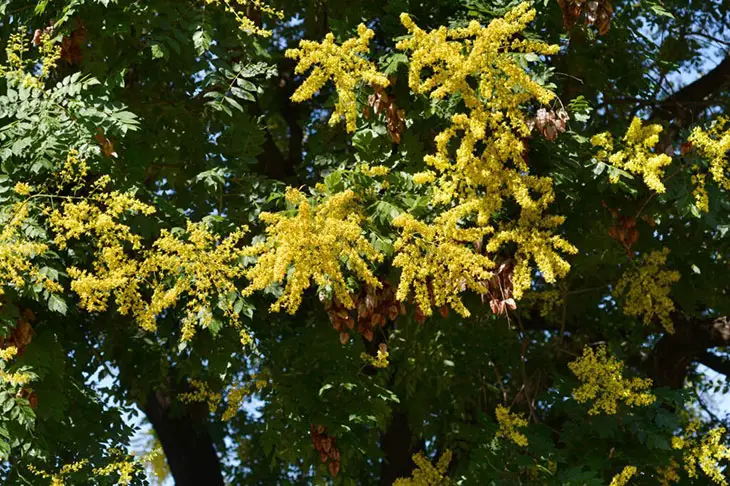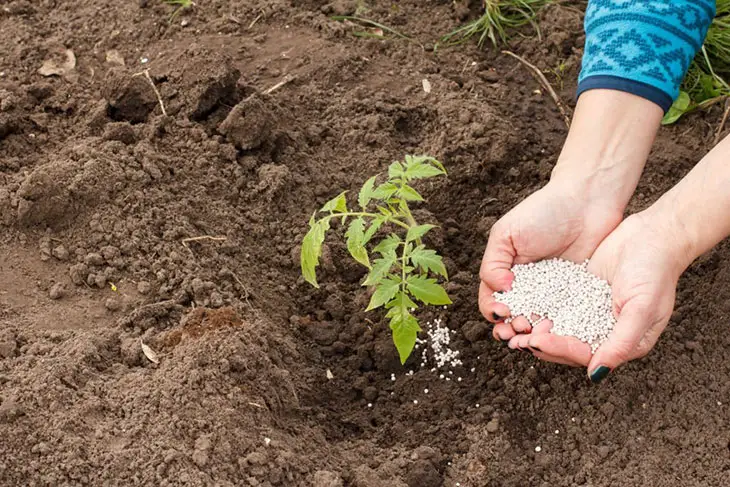
You’ve poured a lot of effort into your tomatoes only to find that you’ve accidentally fed them too much fertilizer.
Now, how to deal with over fertilized tomato plants and bring them back to life? Don’t worry; this post will present several signs of over-fertilized plants.
Besides, you should pay careful attention to the other information about the proper time for fertilizing tomatoes. Keep scrolling down for further details!
About The Tomato Plant
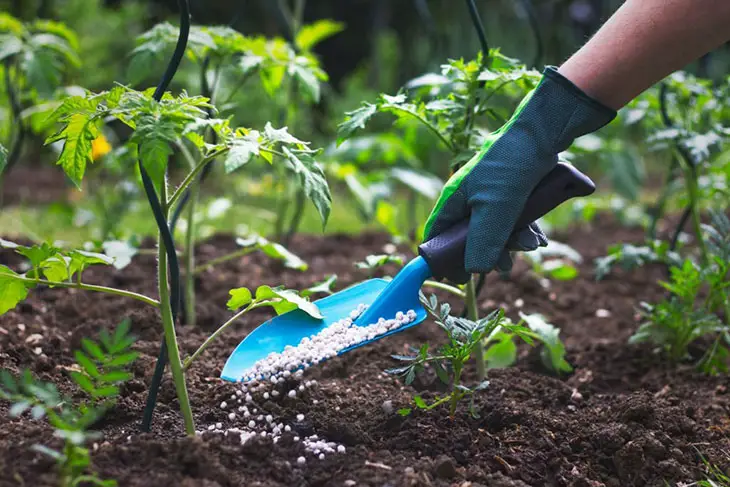
Tomato is one of the most popular plantations in the world, which stands out with its fresh red fruits and greenish foliage.
It belongs to the Solanaceae family, including several used vegetable plants, like peppers, potatoes, and many others. That’s why you sometimes come across tomato pepper hybrids at grocery stores.
It is a perennial plant, yet most farmers regard and grow it as an annual species. Its root could grow to a depth of nearly 7 feet, responsible for taking up water and nutrients in the soil.
Tomato also develops vines that become branching stems in the later phase. At the top is a terminal bud, which will open when the blooming season is about to come.
Its leaves are compound, but some varieties have simple, pinnate leaves with 5 to 7 leaflets.
Tomato fruits have diverse colors, from green to red, and contain plenty of nutrients: vitamin A, vitamin C, potassium, minerals, and antioxidants called lycopene.
The Problem Of Over Fertilized Tomato Plants – Is It Serious?
The practice of over-fertilizing the tomato plant is really serious, posing several threats. First, toxic fertilizer components will penetrate into its body, and they might take a long time to be washed away.
If someone consumes a tomato fruit with a high toxicity level, their health can be jeopardized, especially their digestive system, such as the intestine or stomach.
In worse cases, the problem of necrosis and death is possible.
In addition, the environment is adversely damaged. Suppose you apply excess fertilizer; the soil’s characteristics will change and lose its natural nutrients.
Water will also be contaminated if fertilizer penetrates the groundwater via soil layers.
What Are Some Signs Of An Over Fertilized Tomato Plant?
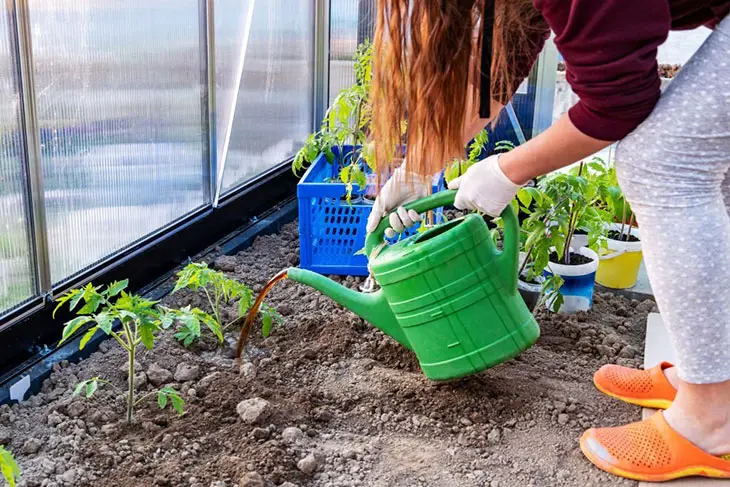
There are various symptoms of a tomato that runs into trouble with over-fertilization, like leaf loss, yellow/wilting leaves, delayed flowers or no flowers/no fruits at all, root rot, or too thick foliage.
Leaf Loss
Leaf loss is one of the visible signs that you must notice closely. As mentioned, a healthy plant often has 5 to 7 leaves.
But if you see that they start to drop off at an increasing rate, lower the amount of fertilizer.
Yellow Leaves
Leaves could turn yellow and pale. The reason is that too much fertilizer hinders the intake of nutrition, which is required for the foliage and plant growth.
With a lack of nutrients, they might show yellowing hues.
Another culprit lies in the overwhelming level of nitrogen in the garden soil. This is caused by the overuse of a fertilizing product that only provides nitrogen, leading to an imbalance in soil nutrients.
Delayed Flowers
Over-fertilizing wreaks havoc on the formation of tomato flowers. They may delay blooming or make fruit although the season reaches, reducing the chance of bumper crops.
This problem also stems from an excessive amount of nitrogen.
Overabundance Of Sediments
The practice is conducive to an overload of sediments. If you fertilize your tomato plant more than needed, the soil will be badly affected, as shown by the disparity in its minerals.
This imbalance triggers an accumulation of sediments in soil, like salt.
Your plant cannot absorb all of them to the full. Many sediments that are not fully absorbed will penetrate into the soil and disrupt the root’s function.
Rotting Roots
The matter of root rot should be noticed as well, mainly deriving from the loss of soil’s nutrition and minerals. Under this circumstance, a system of roots cannot take enough nutrients for the plant to feed on.
Suppose the problem occurs; check tomato foliage immediately to see whether its surface has yellow spots.
Wilting Leaves
The wilting leaf is another looming scenario given too much fertilizer on tomatoes. In this situation, the true leaves’ edges droop and curl downward, coupled with the lack of tree vigor.
Leaf Growth But No Flowers Or Fruits
Sometimes, your tomato tree witnesses an optimum growth of leaves, but there seem to be no buds, flowers, and even fruits on the plant.
This is a primary symptom of over-fertilizing with an excess nitrogen level.
Due to this, the plant’s flower information capacity is limited, while the function of foliage production is boosted.
Development Of Thick Foliage
Another sign is that your plant’s green foliage is thicker than normal; however, the bearing fruits are small and taste bitter, unlike other varieties.
These problems are all rooted in the use of a nitrogen-rich product.
White Materials On The Soil Surface
When you over-fertilize your tomato tree, you will detect white marks on the soil underneath. They are formed from a level of nutrients left behind after you water the soil, and they evaporate.
How To Revive Over Fertilized Tomatoes?
How to fix over fertilized plants? Following are proper care tips to save your tomato plant from being suffocated with fertilizer.
Test Your Soil
Knowing the soil’s properties in your area is important to choose a proper type of fertilizer. You should purchase nitrogen fertilizer to supplement the soil if it severely lacks nitrogen.
On the other hand, if its conditions are pretty good, applying a balanced fertilizer, like a 10-10-10 one, is recommended.
Mulch
Mulch is a safe option to restore your soil conditions after over-fertilization.
Some organic materials, like straw, grass clippings, or coconut mulch, are effective at retaining moisture within the ground and averting excess evaporation.
It is also a supplier of several nutrients, including potassium, phosphorus, and nitrogen.
In other words, applying a layer of mulch not only provides essential nutrients for your tomatoes but also supports its dehydration. Apart from that, mulch protects your tree against the attack of weeds.
Remove Salts
As presented above, overabundance of sediments, like salt, is one of the over-fertilization symptoms. To address this issue, you must reduce the level by scraping off a layer of soil from the soil’s surface.
When undertaking this process, don’t forget to wear protective garments, such as safety glasses and gloves, to secure your health from toxic components that still remain on the ground.
Water
Leaching the soil with water is a good way to neutralize excess fertilizer.
Water will help dilute components that are hard to wash away and restore the balance in soil nutrients, facilitating the root development.
Remove Excess Fertilizer
Like removing fertilizer salts, you must put on necessary garments: protective clothing, eyeglasses, and gloves before performing the procedure.
You can see the fertilizer on the plant and topsoil if it is a powder. All you need to do is remove it completely.
Remember to apply gent force when scooping the fertilizer away, reducing the distress and damage on the plant.
Cut The Damaged Parts
Use a pair of pruning shears to cut off some wilting, misshapen, and damaged leaves.
Removing them is essential to ensure the plant’s future health because they cannot be revived, although you could rescue an overfed tree.
Move The Plant To Another Location
Transferring the damaged plant to fresh soil would be best after you complete the leaching process. Look and choose a safe spot in your garden or replant it in a pot. Good luck!
When To Use A Tomato Plant Fertilizer?
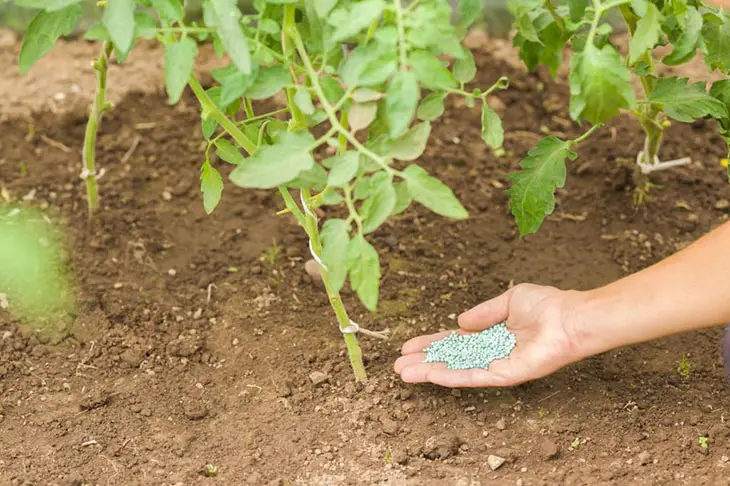
Suppose you grow a tomato plant from seed; you are not advised to apply fertilizer when it is still a seedling.
The proper application of fertilizer comes in handy when it has germinated, and some tiny true leaves appear.
A slow-release fertilizer is suggested because its toxicity is lower than other types.
Please control the ratio of only 3-4 times during the growing season to create optimal conditions for flower’s blooming and fruit development.
Frequently Asked Questions
How To Use A Tomato Plant Fertilizer?
You must take a test of soil samples before fertilizing your tomato plant. So you could opt for a suitable product for your plant’s development.
You start to apply them in several ways, depending on types of fertilizers. When you transplant the seedling, a slow-release product should be directly added to the soil.
Another option is liquid fertilizer, and you’d better spray on the tree’s foliage and soil.
What Is The Best Fertilizer For Tomato Plants?
I always recommend the use of organic fertilizer because it is less toxic and more environmentally friendly than chemical fertilizers.
Among different kinds, Dr. Earth Organic tomato fertilizer leaves a strong impression in my mind.
It contains beneficial soil microbes and mycorrhizae for soil and reduces the risk of root burn.
Its price is also reasonable, about 17 dollars, and you can purchase it on many e-commerce websites, like Amazon and Alibaba.
The Bottom Line
This article has offered deep insights into several risks of over fertilized tomato plants. There are 9 common signs for you to detect, notably problems with leaves and delayed or no flowers.
But if you follow suit with my tips above, you can revive your tomato plants that are overfed with fertilizer in no time.
